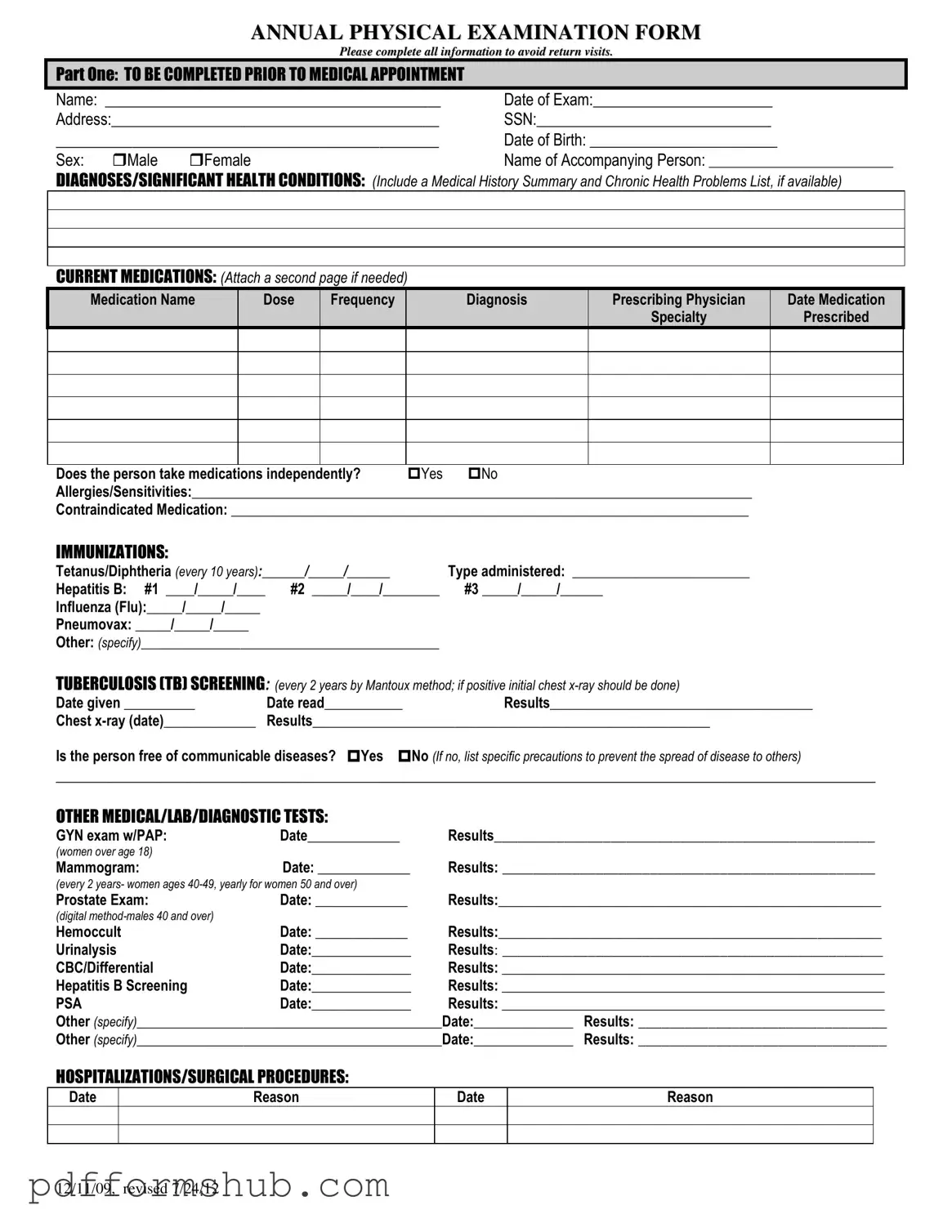The Annual Physical Examination form is a crucial tool designed to gather comprehensive health information from patients before their medical appointments. This form facilitates a thorough understanding of an individual's medical history, current health status, and any ongoing treatments. It begins with essential personal details, including the patient's name, date of birth, and address, ensuring that healthcare providers have accurate identification. The form prompts patients to disclose significant health conditions, current medications, and any known allergies, which can be vital for safe and effective care. Immunization records are also documented, highlighting vaccinations such as Tetanus, Hepatitis B, and Influenza, along with tuberculosis screening details. Additionally, the form includes sections for various medical tests and examinations, ranging from gynecological assessments to blood tests, allowing for a holistic view of the patient’s health. The general physical examination section captures vital signs and evaluates multiple body systems, ensuring that no aspect of the patient's health is overlooked. Finally, the form concludes with recommendations for ongoing health maintenance, dietary advice, and any necessary restrictions, creating a comprehensive picture that supports informed medical decisions.
